
Medicaid in the United States is a federal and state program that helps with medical costs for some people with limited income and resources. Medicaid also offers benefits not normally covered by Medicare, including nursing home care and personal care services. The Health Insurance Association of America describes Medicaid as "a government insurance program for persons of all ages whose income and resources are insufficient to pay for health care." Medicaid is the largest source of funding for medical and health-related services for people with low income in the United States, providing free health insurance to 74 million low-income and disabled people as of 2017. It is a means-tested program that is jointly funded by the state and federal governments and managed by the states, with each state currently having broad leeway to determine who is eligible for its implementation of the program. States are not required to participate in the program, although all have since 1982. Medicaid recipients must be U.S. citizens or qualified non-citizens, and may include low-income adults, their children, and people with certain disabilities. Poverty alone does not necessarily qualify someone for Medicaid.
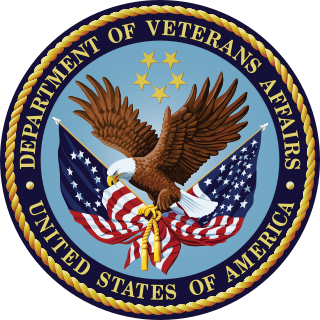
The United States Department of Veterans Affairs (VA) is a federal Cabinet-level agency that provides near-comprehensive healthcare services to eligible military veterans at VA medical centers and outpatient clinics located throughout the country; several non-healthcare benefits including disability compensation, vocational rehabilitation, education assistance, home loans, and life insurance; and provides burial and memorial benefits to eligible veterans and family members at 135 national cemeteries.
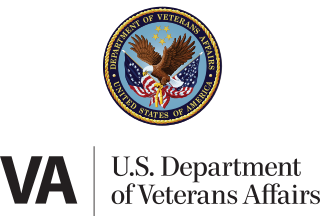
The Veterans Health Administration (VHA) is the component of the United States Department of Veterans Affairs (VA) led by the Under Secretary of Veterans Affairs for Health that implements the healthcare program of the VA through the administration and operation of numerous VA Medical Centers (VAMC), Outpatient Clinics (OPC), Community Based Outpatient Clinics (CBOC), and VA Community Living Centers Programs.

Uniformed Services University of the Health Sciences (USU) is a health science university of the U.S. federal government. The primary mission of the school is to prepare graduates for service to the U.S. at home and abroad in the medical corps as medical professionals, nurses, and physicians.
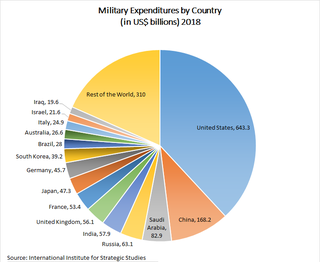
The military budget is the portion of the discretionary United States federal budget allocated to the Department of Defense, or more broadly, the portion of the budget that goes to any military-related expenditures. The military budget pays the salaries, training, and health care of uniformed and civilian personnel, maintains arms, equipment and facilities, funds operations, and develops and buys new items. The budget funds four branches of the U.S. military: the Army, Marine Corps, Navy, and Air Force. For FY2019, the Department of Defense budget is $686,074,048,000

The Indian Health Service (IHS) is an operating division (OPDIV) within the U.S. Department of Health and Human Services (HHS). IHS is responsible for providing direct medical and public health services to members of federally-recognized Native American Tribes and Alaska Native people. IHS is the principal federal health care provider and health advocate for Indian people, and its mission is to raise their health status to the highest possible level.

Tricare, formerly known as the Civilian Health and Medical Program of the Uniformed Services (CHAMPUS), is a health care program of the United States Department of Defense Military Health System. Tricare provides civilian health benefits for U.S Armed Forces military personnel, military retirees, and their dependents, including some members of the Reserve Component. Tricare is the civilian care component of the Military Health System, although historically it also included health care delivered in the military medical treatment facilities.

Los Angeles County Department of Health Services operates the public hospitals and clinics in Los Angeles County, and is United States' second largest municipal health system, after NYC Health + Hospitals.
United States Military Pay is money paid to members in the United States Armed Forces. The amount of pay may vary by the member's rank, time in the military, location duty assignment, and by some special skills the member may have.

The Under Secretary of Defense for Personnel and Readiness, or USD (P&R), is a high-ranking civilian position in the Office of the Secretary of Defense (OSD) within the United States Department of Defense responsible for advising the Secretary and Deputy Secretary of Defense on recruitment, career development, pay and benefits, and oversight of the state of military readiness. The Under Secretary is appointed from civilian life by the President and confirmed by the Senate to serve at the pleasure of the President.

The United States federal budget is divided into three categories: mandatory spending, discretionary spending, and interest on debt. Also known as entitlement spending, in US fiscal policy, mandatory spending is government spending on certain programs that are mandated by law. Congress established mandatory programs under authorization laws. Congress legislates spending for mandatory programs outside of the annual appropriations bill process. Congress can only reduce the funding for programs by changing the authorization law itself. This requires a 60-vote majority in the Senate to pass. Discretionary spending on the other hand will not occur unless Congress acts each year to provide the funding through an appropriations bill.
The Extended Care Health Option or ECHO is a supplemental coverage program offered by TRICARE to dependents of members of the Uniformed services of the United States with a qualifying disability.
Health insurance in the United States is any program that helps pay for medical expenses, whether through privately purchased insurance, social insurance, or a social welfare program funded by the government. Synonyms for this usage include "health coverage", "health care coverage", and "health benefits". In a more technical sense, the term "health insurance "is used to describe any form of insurance providing protection against the costs of medical services. This usage includes private insurance and social insurance programs such as Medicare, which pools resources and spreads the financial risk associated with major medical expenses across the entire population to protect everyone, as well as social welfare programs like Medicaid and the Children's Health Insurance Program, which both provide assistance to people who cannot afford health coverage.
The Assistant Secretary of Defense for Health Affairs is chartered under United States Department of Defense Directive (DoDD) 5136.1 in 1994. This DoDD states that the ASD(HA) is the principal advisor to the U.S. Secretary of Defense on all "DoD health policies, programs and activities." In addition to exercising oversight of all DoD health resources, ASD(HA) serves as director of the Tricare Management Activity.
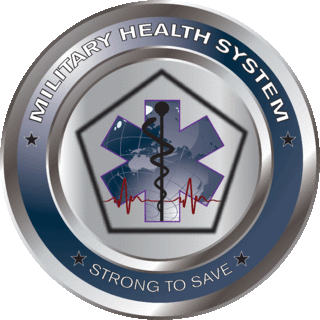
The Military Health System (MHS) is the enterprise within the United States Department of Defense that provides health care to active duty and retired U.S. Military personnel and their dependents. Its mission is to provide health support for the full range of military operations and sustain the health of all who are entrusted to MHS care.
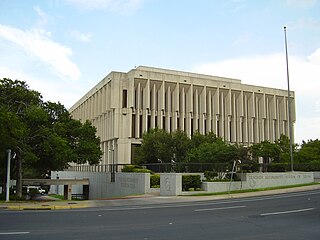
Teacher Retirement System of Texas (TRS) is a public pension plan of the State of Texas. Established in 1937, TRS provides retirement and related benefits for those employed by the public schools, colleges, and universities supported by the State of Texas and manages a $147.4 billion trust fund established to finance member benefits. More than 1.5 million public education and higher education employees and retirees participate in the system. TRS is the largest public retirement system in Texas in both membership and assets and the sixth largest public pension fund in the U.S. The agency is headquartered at 1000 Red River Street in the capital city of Austin.

The Oklahoma Health Care Authority (OKHCA) is an agency of the government of Oklahoma responsible for providing health insurance benefits for the state's SoonerCare members. The Authority is the state-level counterpart to the federal Centers for Medicare and Medicaid Services.
AHLTA is a global Electronic Health Record (EHR) system used by U.S. Department of Defense(DoD). It was implemented at Army, Navy and Air Force Military Treatment Facilities (MTF)around the world between January 2003 and January 2006. It is a services-wide medical and dental information management system. What made AHLTA unique was its implementation date, its Central Data Repository, its use in operational medicine and its global implementation. There is nothing like it in the private sector. (According to the DoD, “AHLTA” was never an acronym, but is rather the system's only name.)

The Pandemic and All-Hazards Preparedness Reauthorization Act of 2013 is a law enacted by the 113th United States Congress. The Act amends the Public Health Service Act in order to extend, fund, and improve several programs designed to prepare the United States and health professionals in the event of a pandemic, epidemic, or biological, chemical, radiological, or nuclear accident or attack. The Act clarifies the authority of different American officials, makes it easier to temporarily reassign personnel to respond to emergency situations, and alters the process for testing and producing medical countermeasures. The Act is focused on improving preparedness for any public health emergency.
The Michigan Office of Retirement Services (ORS) administers retirement programs for Michigan's state employees, public school employees, judges, state police, and National Guard. ORS also provides various retiree healthcare benefits, including traditional insurance plans, Personal Healthcare Funds, and Health Reimbursement Accounts. ORS serves over 530,000 customers, representing one out of every fourteen Michigan adults. ORS customers live in approximately one out of every nine Michigan households. The state employee system and the public school employee system administered by ORS make up 95 percent of all active plan membership in Michigan. ORS is responsible for the 18th largest public pension system in the United States and the 47th largest pension system in the world, managing combined net assets of nearly $67.8 billion. In fiscal year 2017, ORS paid out over $7.3 billion in pension and health benefits. According to the Pensionomics 2016 report from the National Institute on Retirement Security, pensions paid to Michigan retirees generated $11.1 billion in total spending in the state of Michigan. A Pew study ranks ORS in the top ten state pension systems for paying the highest percentage of their annual required contribution for pension plans, which demonstrates a commitment to fiscal responsibility. ORS is a division of Michigan's Department of Technology, Management, and Budget (DTMB).















